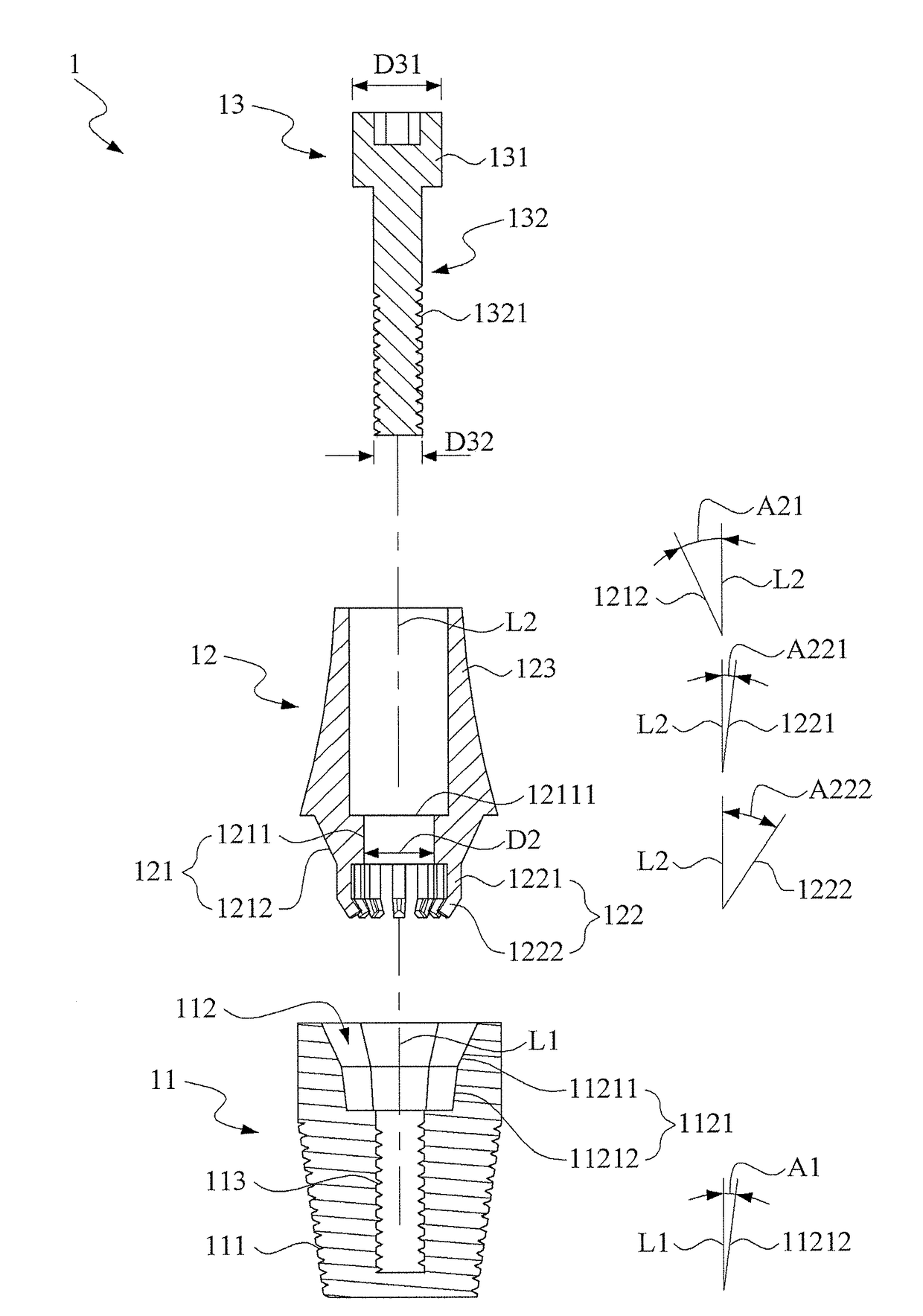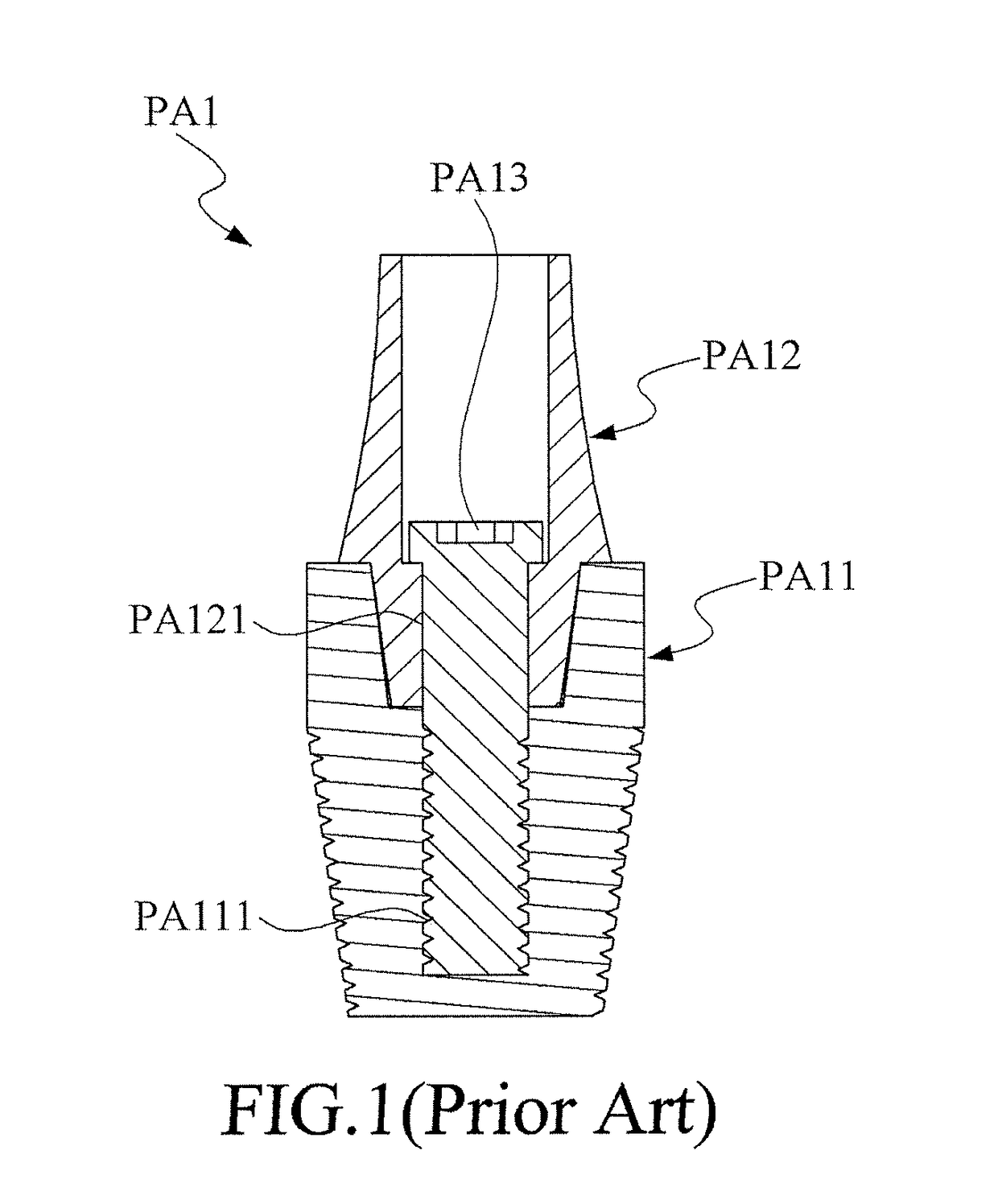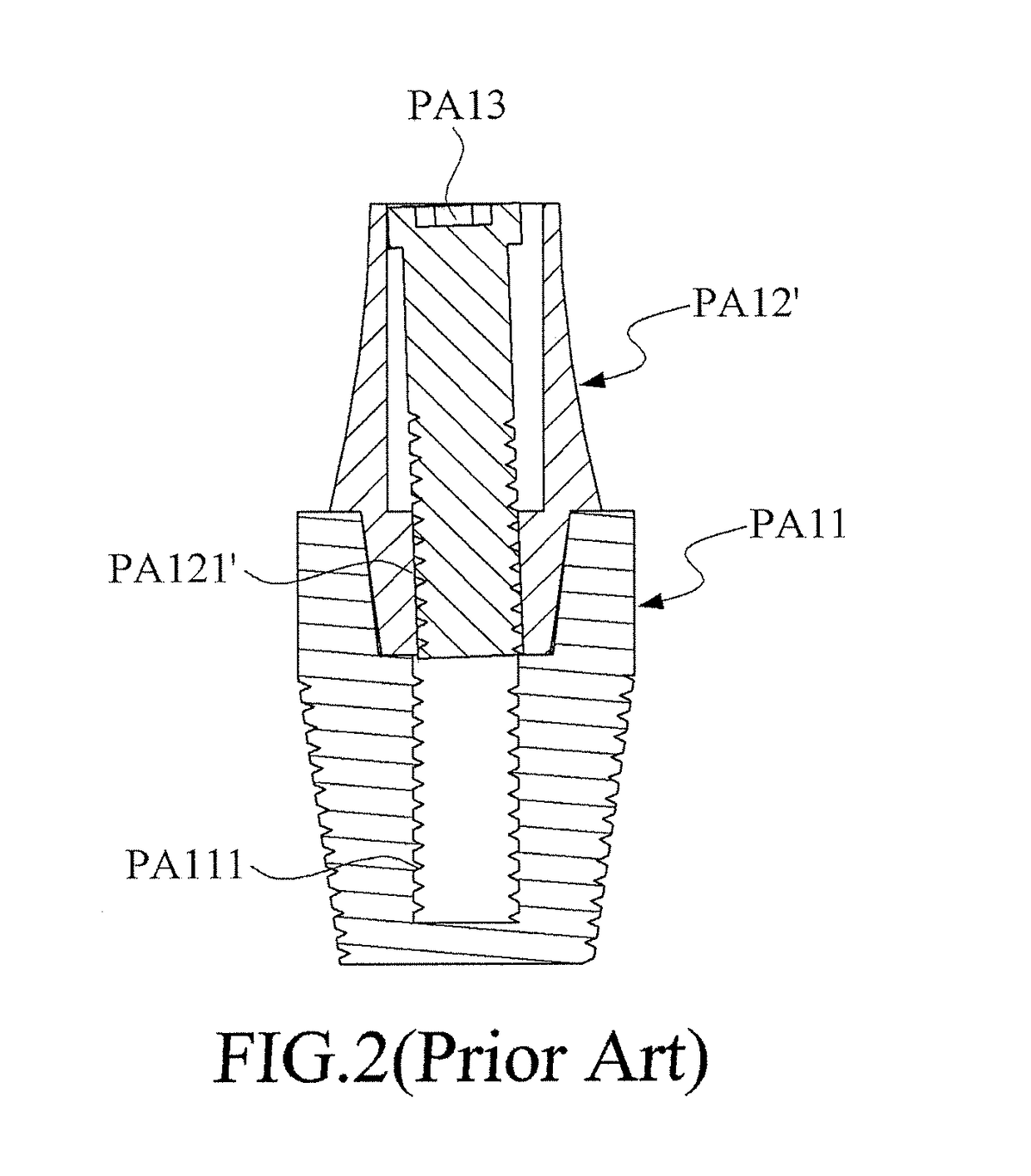Dental implant assembly and abutment thereof
a technology for dental implants and abutments, which is applied in dental implants, dental surgery, medical science, etc., to achieve the effect of hindering the relative rotation, preventing the relative rotation between the abutment and the implant, and preventing the relative rotation more effectively
- Summary
- Abstract
- Description
- Claims
- Application Information
AI Technical Summary
Benefits of technology
Problems solved by technology
Method used
Image
Examples
first embodiment
[0047]The implant 11 has an implant outer thread section 111, which is utilized to have the implant 11 screw-fixed to the alveolar bone 2. The implant 11 also has a tapered position-restricting trench 112 surrounded by a position-restricting wall 1121. The tapered position-restricting trench 112 has an implant central axis L1. Preferably, the tapered position-restricting trench 112 is a tapered polygonal position-restricting trench, such as the tapered hexagonal position-restricting trench in the The tapered polygonal position-restricting trench can also be the tapered pentagonal position-restricting trench or the tapered octagonal position-restricting trench for example. It is understood that there are various embodiments regarding the shape of the position-restricting trench, which is not repeated here.
[0048]The position-restricting wall 1121 comprises a tapered wall portion 11211 and a pressed portion 11212. The tapered wall portion 11211 is a polygon-shaped position-restricting...
second embodiment
[0059]Please refer to FIGS. 11 and 12, wherein FIG. 11 is a cross-section view of multiple dental implant assemblys with errors together with the dental bridge provided in accordance with second embodiment of the present invention after the assembling, and FIG. 12 is an enlarge view of the portion B in FIG. 11. As shown, when the dentist places the three implants 11, 11a, 11b as one unit into the alveolar bone 2, human errors are unpreventable such that the three implants 11, 11a, 11b might not be able to be positioned at the ideal position and tilt angle such that the misalignment issue among the implants would be resulted.
[0060]In FIG. 11, these implants 11, 11a, 11b are unparalleled to each other, the implant 11 has a small deviation toward the counterclockwise direction and the implant 11b has a small deviation toward the clockwise direction such that the offset error generated between the implant 11 and the abutment 12 would be different from that generated between the implant ...
PUM
 Login to View More
Login to View More Abstract
Description
Claims
Application Information
 Login to View More
Login to View More - R&D
- Intellectual Property
- Life Sciences
- Materials
- Tech Scout
- Unparalleled Data Quality
- Higher Quality Content
- 60% Fewer Hallucinations
Browse by: Latest US Patents, China's latest patents, Technical Efficacy Thesaurus, Application Domain, Technology Topic, Popular Technical Reports.
© 2025 PatSnap. All rights reserved.Legal|Privacy policy|Modern Slavery Act Transparency Statement|Sitemap|About US| Contact US: help@patsnap.com



